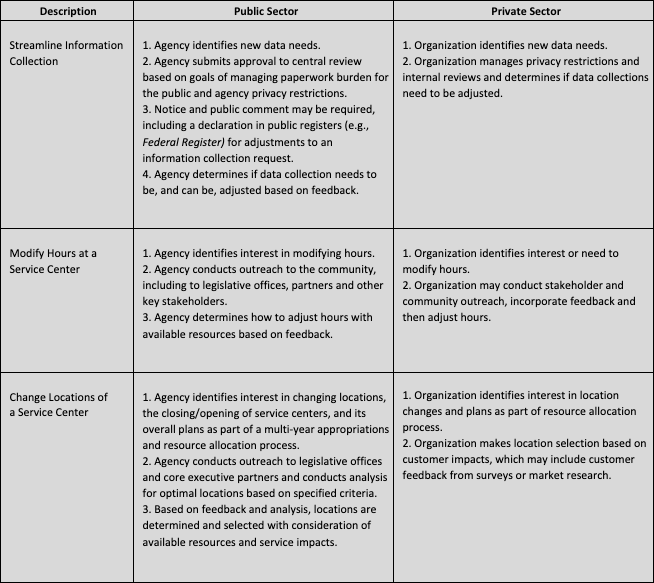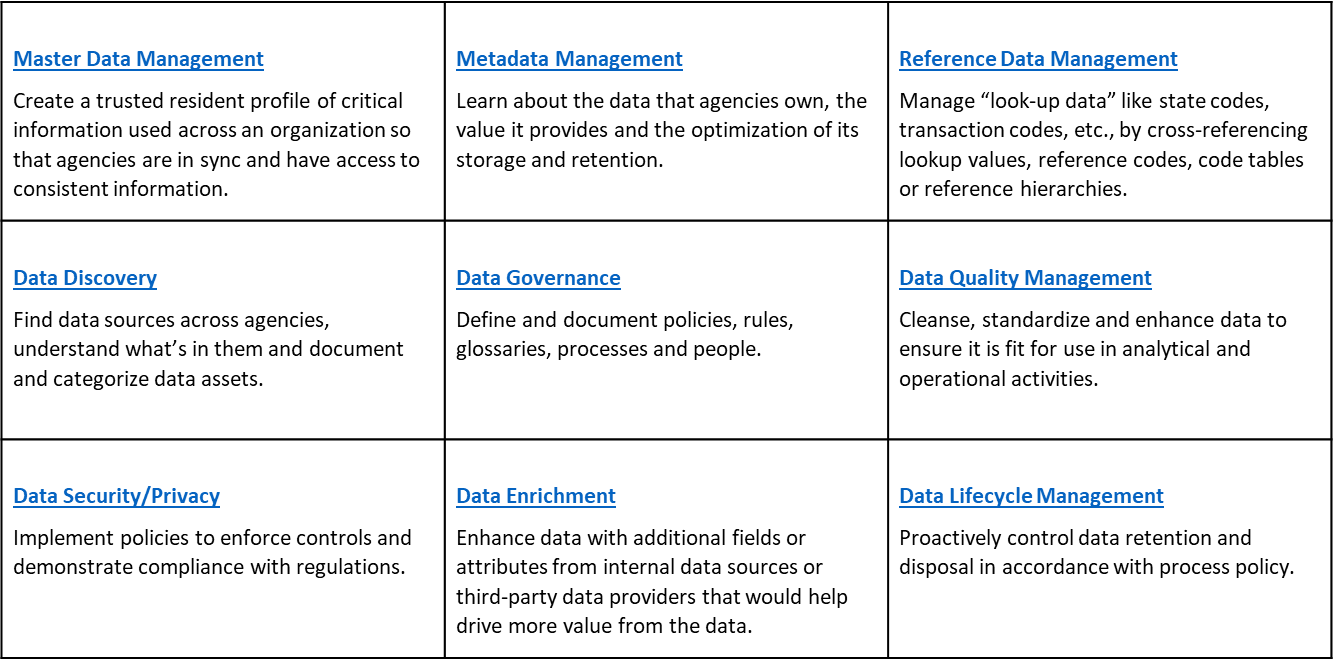How to Translate Success in Commercial Customer Experience (CX) to Enhance Government CX

Government agencies at the federal, state and local levels are increasingly seeking to modernize the way they provide personalized services to their residents. People now expect the same seamless, easy-to-navigate digital transactions from their government institutions as they experience with commercial businesses. And the demand is getting harder to ignore. The days of in-person facility visits or submitting usernames, passwords, etc., online multiple times to access services and benefits should be an echo of the analog age. Unfortunately, government agency maturity levels on modern customer experience (CX) remains variable at best. Agencies can and must do better.
Prior to embarking on an enterprise-wide CX investment, however, it’s useful to spend time considering how government CX compares to the longer-tenured commercial CX approach. Understanding commercial CX and employing applicable best practices to the unique government CX environment should be a fundamental first step to a successful outcome.
Commercial CX Expectations
An online commercial experience today means easily finding a product or service you need. It also means making a swift and secure purchase accompanied by minimal delivery times. Comparing different offerings by price or other value-based benefits is another convenient feature. Customer reviews may also be available. An advanced capability in commercial CX can be a personalized offering of similar products or services based on past purchases for future consideration. This is a correlation, if you will, between what you’re buying and what may interest you further. Perhaps there are items or services you didn’t realize were related.
Many commercial businesses continue to support customer choice by providing brick and mortar facilities to conduct purchases. There’s nothing like putting your hands on that latest battery-powered grass trimmer at the local hardware store to see how it feels prior to making a decision! But even here, in the brick-and-mortar facility, the combination of onsite research and online purchasing is the norm. And let’s not kid ourselves. That brick-and-mortar location is likely tracking your in-store habits and arranging their shelves and products accordingly just like they do online to maximize their value to you.
And if that power trimmer you bought is faulty, good CX means that communication is straightforward when you need it serviced or want to send it back. Good CX further means that the business knows who you are, what you bought and what commitments you expected from that product to quickly resolve the issue.
Behind all these commercial CX capabilities are strong data management practices. Collecting and cataloging data on the consumer — what they purchase, how they purchase, when they purchase and why they purchase — are critical data points for the successful modern business. Analyzing these points and understanding how to personalize the goods and services experience is reliant on shared data across departments. This data provides a single source of truth for the customer, making the process as easy as possible. This single source of truth — or 360-degree view of the customer — capability is at the heart of what we all expect from commercial CX today.
Government CX Reality
Clearly, most government agencies today don’t provide the level of CX that residents expect from commercial CX. In a recent customer experience index report, the federal government ranks last among the sectors in this category.1 While reasons exist for this gap, there are also options to improve.
Some of the gap is due to significant and reasonable differences existing between CX in a government and commercial context. It’s important to recognize these contrasts to avoid legal or compliance issues applicable to government agencies. As stated in a recent Data Foundation 2023 report, a key distinction is an agency’s role as a provider of goods and services accessible by eligible residents. In the commercial industry, revenue is a major motivating factor for addressing CX. For an agency, this doesn’t usually apply.
Even though revenue and profit margins are not a central focus or directly related to the public’s use of government services, it doesn’t diminish the need for improving the experience of individuals and organizations interacting with the system. It’s an inherent government obligation to do so.
The recent White House focus on this topic at the federal level clearly demonstrates why government CX is important and must be improved.2 The executive order states that “Government must be held accountable for designing and delivering services with a focus on the actual experience of the people whom it is meant to serve. Government must also work to deliver services more equitably and effectively …”
The Data Foundation report recognizes other notable differences, outlined in Figure 1 below.

Common Ground for Government CX
The core of commercial CX is the data associated with the customer, the product and the supplier: essentially, who bought what from what source. For government CX, this translates to the resident, the service/benefit/claim and the agency: essentially, who needs what from what agency.
When government can positively identify the resident via a golden record across all agencies, much as commercial CX does, it gains tremendous insight into that resident’s needs. Examples are a better understanding of services or program submissions and eligibility criteria. A 360-degree view of resident interactions can also help personalize services, correlating and matching between the various services offered that might assist the resident.
There is a good side benefit of resident golden records that are accessible and shared across agencies: the reduction of fraud associated with false claims. In other words, if government can positively identify its citizens and their previous interactions across disparate agencies and services, the risk of fraudulent and criminal activity can be reduced.
Most importantly, with a golden record established, the resident can have a one-stop shop when engaging with government agencies. Regardless of the benefit or claim, the resident’s identity and services consumed is known at the point of engagement. This approach allows for a modern government CX.
An introduction to some of the best-practice data management capabilities used in commercial CX applicable to government CX, is summarized below. It’s unlikely that every capability to support each CX use case is needed. But once requirements are validated, a data management platform aimed at addressing an agency’s CX business drivers is vital.

Next Steps
Stay tuned for further exploration on this topic. Our next blog in a three-part series will introduce five key recommendations to implement effective GX initiatives in government agencies.
Want to learn more about how Informatica can support your GX initiatives? Read our brochure, “Enhance Citizen Services and Power Government Innovation with Connected Data,” and check out www.informatica.com/public-sector for additional resources.








